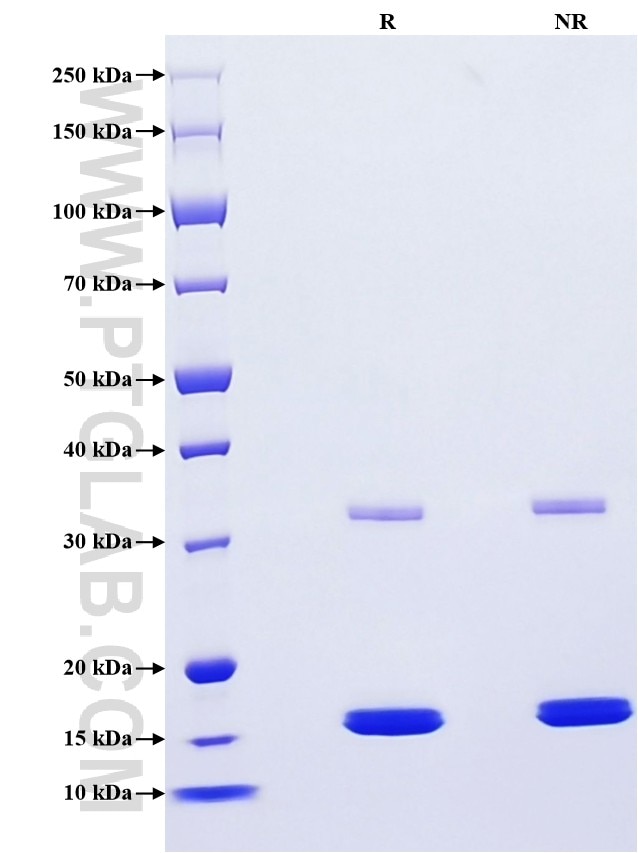Recombinant Human Prealbumin/Transthyretin protein (His Tag)
Species
Human
Purity
>90 %, SDS-PAGE
Tag
His Tag
Activity
not tested
Cat no : Eg0931
Validation Data Gallery
Product Information
| Purity | >90 %, SDS-PAGE |
| Endotoxin | <0.1 EU/μg protein, LAL method |
| Activity |
Not tested |
| Expression | HEK293-derived Human Prealbumin protein Gly21-Glu147 (Accession# P02766) with a His tag at the C-terminus. |
| GeneID | 7276 |
| Accession | P02766 |
| PredictedSize | 14.8 kDa |
| SDS-PAGE | 15-17 kDa and 33 kDa, reducing (R) conditions |
| Formulation | Lyophilized from 0.22 μm filtered solution in PBS, pH 7.4. Normally 5% trehalose and 5% mannitol are added as protectants before lyophilization. |
| Reconstitution | Briefly centrifuge the tube before opening. Reconstitute at 0.1-0.5 mg/mL in sterile water. |
| Storage Conditions |
It is recommended that the protein be aliquoted for optimal storage. Avoid repeated freeze-thaw cycles.
|
| Shipping | The product is shipped at ambient temperature. Upon receipt, store it immediately at the recommended temperature. |
Background
Transthyretin (TTR) is a plasma transport protein for thyroxine and retinol, through the association with retinol-binding protein. It is a homotetrameric protein synthesized mainly in liver, choroid plexus, retinal pigment epithelium, and pancreas.Within the CNS, TTR is the only known protein synthesized solely by the choroid plexus. Mutant and wildtype TTR give rise to various forms of amyloid deposition (amyloidosis). Defects in TTR are the cause of amyloidosis transthyretin-related (AMYL-TTR),hyperthyroxinemia dystransthyretinemic euthyroidal (HTDE) and carpal tunnel syndrome type 1 (CTS1).
References:
1. Iwasaki, Takeshi et al. Neuropathology: official journal of the Japanese Society of Neuropathology vol. 31,6 (2011): 632-8. 2. Sousa, João Carlos et al. Neurobiology of aging vol. 28,5 (2007): 713-8.

